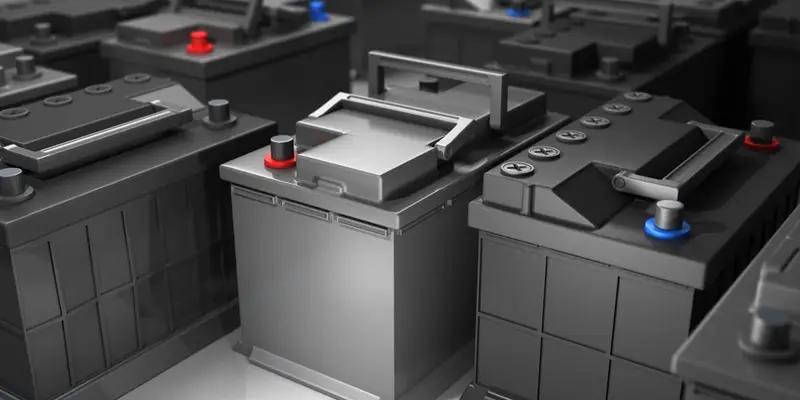Solar batteries can provide emergency power and help reduce electricity bills for homes with or without solar panels.
As more and more new battery options become available, it’s crucial to find one that fits your unique energy needs.
In this article, we will highlight the best solar batteries in the market, focusing on their most attractive features and important factors you should consider when picking a solar battery for your house.
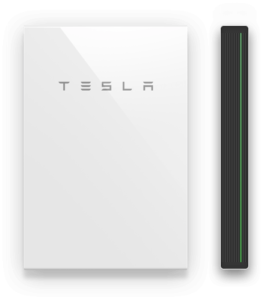
Tesla Powerwall 2
The Tesla Powerwall 2 stands out in the solar battery market due to its popularity and distinctive features.
It delivers a steady 5 kW of power and uses the somewhat older NMC battery technology, which is not as efficient as newer types.
The Powerwall is available in a single size of 13.5 kWh, but you can combine multiple units for increased backup capacity.
A notable advantage of the Powerwall is its 90% efficiency in energy retention and use, and its ability to be fully depleted without harming its longevity, thanks to its 100% Depth of Discharge (DoD) capability.
This full DoD is a unique characteristic that differentiates the Powerwall from many other solar batteries.
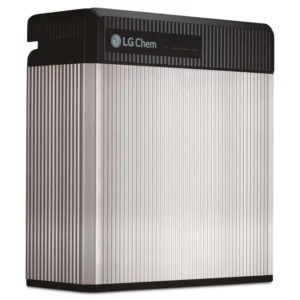
LG Chem RESU
The LG Chem RESU-10H is a compact solar battery with a 9.8 kWh usable capacity, ideal for homes with less demanding energy needs.
It offers the flexibility of stacking, permitting homeowners to increase their total storage capacity to as much as 32 kWh by combining units.
With a continuous power supply of 5 kW and a high round-trip efficiency of 94.5%, the LG Chem RESU-10H ranks as one of the top NMC batteries for efficiency.
It also supports a Depth of Discharge (DoD) of 95%, which means it can be nearly fully used without impacting its lifespan or storage capabilities.
However, the battery comes with a 10-year warranty that has a relatively low energy throughput limit of 22.4 MWh, and by the end of the warranty period, the guaranteed capacity retention is 60%, which, while standard in the industry, is less than some competitors offer.
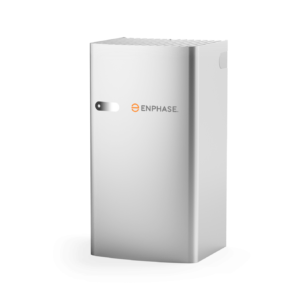
Enphase IQ
Enphase, a company recognized for its solar microinverters, has developed the Enphase IQ battery to cater to a variety of energy requirements, compatible only with Enphase inverters and is able to work alongside both gas and solar generators to expand home battery backup options.
The Enphase IQ battery line includes four different models that offer flexibility in both size and power:
- The Enphase IQ 3 provides 3.36 kWh of usable capacity and is the heftier option.
- The Enphase IQ 3T matches the IQ 3 in capacity but in a more space-efficient design.
- The Enphase IQ 10 is the larger model with 10.08 kWh of storage.
- The Enphase IQ 10T shares the capacity of the IQ 10 but is nearly 24 pounds lighter.
Customers can pair like models to boost their energy storage, and the batteries come with varying power outputs—1.28 kW for the 3 and 3T, and 1.85 kW for the 10 and 10T.
All models boast an impressive 96% round-trip efficiency and a full 100% DoD, making them more efficient and flexible in usage than the SunVault.
Enphase offers a 10-year warranty on these batteries with a 4,000-cycle guarantee.
Throughput warranties, however, differ with the model—the 3 and 3T are covered for 9.8 MWh, while the 10 models are at 29.4 MWh.
Additionally, all Enphase IQ batteries guarantee 70% capacity retention at the end of their warranty period.
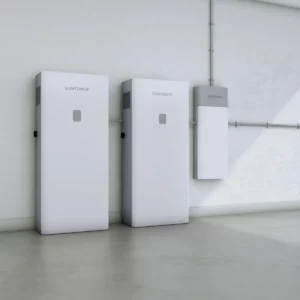
SunPower SunVault
SunPower, a solar company widely recognized for its premium solar panels, has created the SunVault as its bespoke energy storage system for residential use.
SunPower offers two main models: the SunVault Storage 13 and the SunVault Storage 26.
The Storage 13 model features a 12 kWh capacity and can continuously provide 6.8 kW of power, which indicates how much power the battery can deliver at any given moment.
The Storage 26 steps up the capacity to 24 kWh, which is notable for being the largest capacity for a lithium iron phosphate (LFP) battery in this comparison.
LFP batteries are known for their longevity and safety, outperforming other types in these regards.
An important performance metric for these batteries is their round-trip efficiency, which is how much energy is retained after storage and retrieval.
Both SunVault models have an 85% efficiency, losing 15% in the process, which is still better than the national average of 80% efficiency reported by the EIA.
However, SunPower has not made the depth of discharge (DoD) figures public.
DoD is a critical specification as it indicates the extent to which a battery can be used before it impacts its lifespan.
Both batteries come with a standard 10-year warranty, with certain conditions that might conclude the warranty sooner, such as the Storage 13’s 38 MWh throughput limit or a 4,000-cycle lifespan.
The warranty will expire after 10 years or once these parameters are met, whichever comes first.
At the end of the warranty period, SunVault batteries are expected to retain 70% of their initial capacity, which is better than the industry average of 60%.
This means that even after a decade or reaching the specified usage limits, a SunVault battery should still perform at 70% of its original capacity.
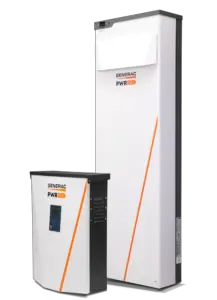
Generac PWRcell
The Generac PWRcell presents a versatile approach to home energy storage with four different configurations, each offering customizable capacity and power output to suit various home energy needs.
The building block of the PWRcell system is the 3-kWh module, which allows homeowners to tailor their energy storage system to their specific requirements.
What sets the PWRcell apart in the market is that it’s a DC-coupled battery system.
This means it stores energy in the form of direct current (DC), which is the type of electricity produced by solar panels.
The advantage of DC-coupled systems is their efficiency; the energy conversion from DC to AC happens just once.
This is in contrast to AC-coupled batteries that typically include their own inverters and can be more straightforward to integrate into existing solar setups.
However, for new solar system installations, a DC-coupled solution like the PWRcell can often be the more efficient choice, albeit requiring an additional separate inverter for converting stored DC power to AC power for home use.
Types of Solar Batteries
Solar battery technology is an essential component of the renewable energy landscape, enabling the storage of solar power for use when the sun isn’t shining.
There are four types of solar batteries widely used today, while two are mainly used for residential solar systems: lead-acid and lithium-ion, each with its distinct characteristics.
Lead-acid batteries are the veterans of solar storage systems, prized for their reliability in deep cycle applications where they are repeatedly charged and discharged.
Despite their proven track record, they have a relatively lower depth of discharge—only up to 50%—to avoid shortening their lifespan.
Typically larger and heavier, these batteries need more space and have a shorter operational life of about three to five years, making them a fit for off-grid scenarios where their drawbacks are offset by their deep cycle durability.
Lithium-ion batteries have taken the lead in residential solar energy storage due to their higher energy density, which allows them to store more power in a smaller space.
They charge more quickly than their lead-acid counterparts and can handle a higher depth of discharge, often between 80% and 100%, without as significant an impact on their lifespan, which can extend up to a decade.
How to Shop for a Solar Battery
When buying a solar battery, consider the solar battery types, capacity, depth of discharge, price, power ratings, efficiency, and warranty.
AC batteries are easier to install, while DC batteries are more efficient.
Capacity should match your solar output, and a higher DoD is better—factor in the cost, including potential savings from incentives.
Power ratings reveal the battery’s output capability.
Aim for batteries with high round-trip efficiency to minimize energy loss.
Finally, a comprehensive warranty ensures longer-term reliability and performance.

